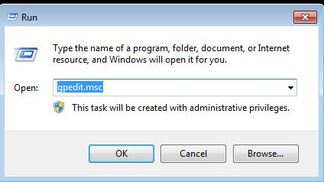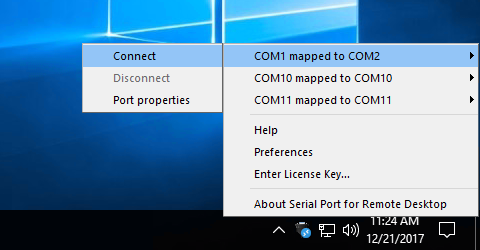

- #Remote desktop services user mode port redirector drivers#
- #Remote desktop services user mode port redirector software#
- #Remote desktop services user mode port redirector windows 8#
- #Remote desktop services user mode port redirector windows#
VirtualHere Client for Linux Intel 32-bit EDIT 2: In the edit above, I was trying to log in with domain admin credentials. When I type in valid credentials, I get the same generic 'cant connect' error. If you want to run the VirtualHere USB Client for Linux with a Graphical User Interface (GUI) choose from the following clients: EDIT: If I restart the Remote Desktop Services and Remote Desktop Services UserMode Port Redirector services, and try to connect as soon as they restart, I get a credential prompt.

Most linux versions have this compiled and enabled, if not see here. (It is recommended to use the latest kernel (4.9+) for maximum compatibility) VirtualHere USB Client for Linux uses the built-in Linux usbip client driver.
#Remote desktop services user mode port redirector windows#
VirtualHere Client for Intel/Silicon MacOS 12/13/14 (Note Microphones/webcams wont work via VirtualHere) Remote Desktop Services UserMode Port Redirector (UmRdpService) is a Windows Server 2012 service that allows the redirection of Printers/Drives/Ports for. VirtualHere Client for Windows ARM64 (Win 10/Win11 on ARM64) VirtualHere Client for Windows (64-Bit Win10/Win11/Server 2) Some services stop automatically if they are not in use by other services or programs. When I try to do it Windows answers 'The Remote Desktop Services UserMode Port Redirector service on Local Computer started and then stopped. Please click on a link below to download: Version 5.5.3 ( Changes) ( SHA1SUM) I cant start 'remote desktop services usermode port redirector' service. It will then appear to be directly connected to your machine and can be used just like a local device! Right click on the device you want to use and select Use. Available USB devices will be displayed in a tree.
#Remote desktop services user mode port redirector software#
The software will automatically find USB devices shared by VirtualHere USB Servers on the network. For advanced users, the client can run as a service, and is controllable using an API and supports SSL Simply click the link below, save the downloaded file to the Desktop, and run. The client needs to be run on any machine that wants to use USB devices shared by the VirtualHere USB Server. The client was created to be intuitive and extremely easy to use. for Remote Desktop Services and Remote Desktop Services UserMode Port Redirector. I can get to the VM by Vcenter so I have access to get into it but would like RDP working incase VMware someday won't come up and then I have no way of getting into it.The VirtualHere USB Client runs on Windows, MacOS, Linux and Android. Check if the RDP service is running on the server as shown below.
#Remote desktop services user mode port redirector drivers#
I don't see any missing drivers either in Device Manager "show hidden devices", everything looks the same as the other machines that work (2019 servers) Delete the saved RDP logon credentials for your remote host.


When the Remote Desktop Services UserMode Port Redirector is started, it runs as localSystem in a process of svchost.exe, sharing it with other services.
#Remote desktop services user mode port redirector windows 8#
In Windows 8 it will not be started until the user starts it. Desktop Services and Remote Desktop Services UserMode Port Redirector. Remote Desktop Services UserMode Port Redirector is a Win32 service. Or by running the command: rundll32.exe keymgr.dll,KRShowKeyMgr. We have a Remote Desktop Services (RDS) farm with 2 servers, probably add another. I have scoured around on the web for this one and do not find much outside of redoing the system which, I don't understand why that would be the only solution here. Open the Windows Credentials via the Control Panel. Server has been rebooted but this doesn't seem to fix this issue. The only odd thing I see is that in event viewer for this is in Microsoft->Windows->TerminalServices-LocalSessionManager is that informational events showĮvent ID 34 "Remote Desktop Services is not accepting logons because setup is running" That delay is a bit of a problem for us, and one solution would be to force the build of. Nothing was different about the setup other than the IP's. I understand UmRdpService (Remote Desktop Services UserMode Port Redirector) is responsible for building the redirected printers (and drives) list, but I've noticed the printers list doesn't refresh until possibly a minute after signing in or reconnecting. The PnP protocol passes the device management and I/O data between the RDP stack in kernel mode and the Remote Desktop Services User Mode Port Redirector. I have 2 other 2019 servers that are working with this same Template with no issues so I know this isn't the image that was used. Remote Desktop Services User Mode Port Redirector I do see Remote Desktop Services services running along with Have 1 server 2019 that is not listening to port 3389 when doing netstat -ano I do not see UPD or TCP for 3389.


 0 kommentar(er)
0 kommentar(er)
